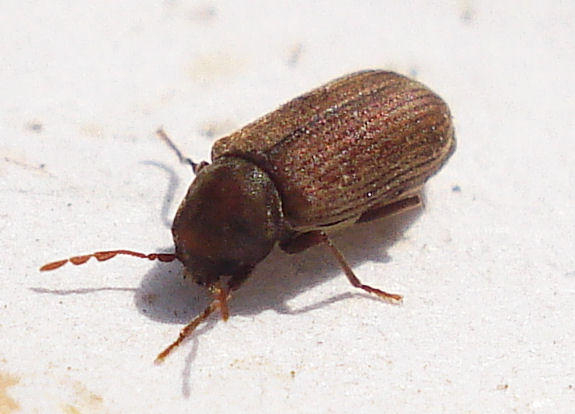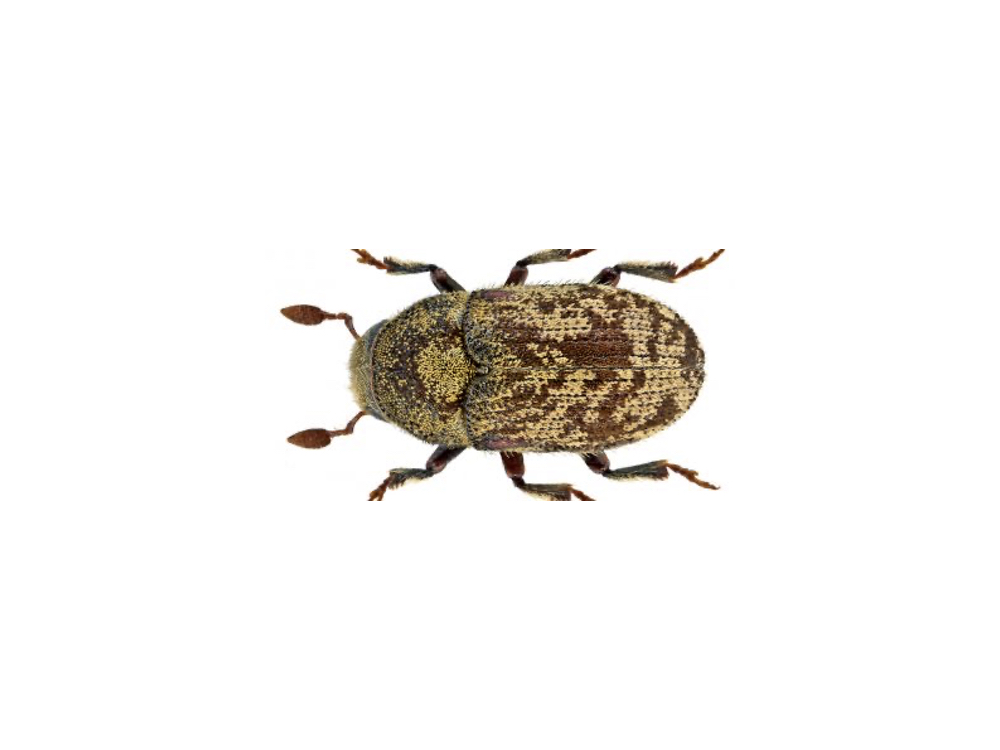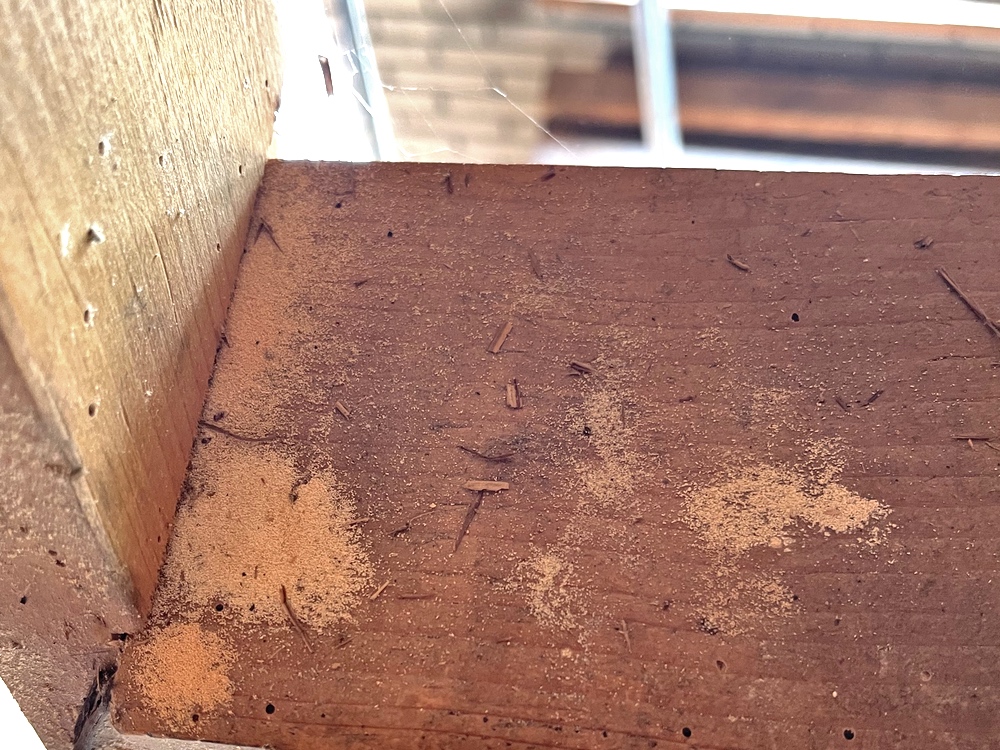There are different types of wood pests, such as wet wood borers and dry wood borers. The beetles undergo a complete metamorphosis i.e. egg-larva-pop-adult, feeding as a larva they eat their way through the wood and then as an adult they bore their way out. When they bore through the wood they will do quite a bit of damage and can even eat away at an entire product inside over the years. Once they eat their way out you will find a small round hole (this is called the exit hole) and under the hole a trail (tear) of wood. The adult beetle will start looking again to deposit new eggs.

All species of woodworm deposit their eggs in seams and cracks of the wood. The egg will develop into a larva, this larva will bore through the wood and each beetle has its own number of drilling years. This can vary from 1 to 12 years. Each beetle also has its own preference for wet wood or dry wood and type of wood. So some beetles can make damage in homes, businesses, farms or churches and other beetles can make damage to wet infested wood. It is also common for people to bring in firewood that has been outside for quite some time and the adult wood beetle flies out and you then find it in the house. However, they cannot damage dry wood and wood that has no bark. The larva will pupate after which it will gnaw out a hole, these exit openings as we call them have a different diameter opening in each beetle.
The adult beetle will again deposit new eggs and thus, over the years, the wood is increasingly affected and the quality of the wood will rapidly deteriorate.
Protect Pest Control can solve this in a professional and effective manner.

The common Woodworm beetle also called the furniture beetle. Is a drywood borer and prefers softwood, hardwood, sapwood. An adult woodworm beetle is broadly elongated, dark brown in color, is 2 to 5 mm in size and has long antennae. They deposit 20 to 40 eggs in seams and cracks of wood, the larvae that hatch from the eggs bore through the wood for 1 to 3 years to adulthood. The hatching period is between May and August.

The large Woodworm Beetle also known as the Pied Gnaw Beetle or death knocker. Is a drywood borer and prefers hardwood, Oak, sapwood and heartwood. An adult wood beetle is dark brown with light brown yellowish speckled fur, is 4 to 9 mm and has short hairy antennae. They deposit 40 to 60 eggs in seams and cracks of the wood, the larvae that hatch from the egg bore through the wood for 3 to 4 years to adulthood. The hatching period is between March and June.
By the way, it is characteristic of wood mice that they often drag feed boxes full of pebbles.

The House longhorn beetle is a drywood borer and prefers softwood, spruce and pine and especially sapwood. An adult wood beetle is brownish-black with gray spots, measures 1 to 3 mm and has long antennae. The female has an ovipositor on the back of her body for laying eggs. They deposit about 200 eggs in seams and cracks of wood, the larvae that hatch from the egg bore through the wood for 3 to 12 years to adulthood. The hatching period is between June and September.

The Ash bark beetle is also called the variegated or small variegated ash bark beetle. Is a wetwood borer and prefers the bark of the trunk and branches of ash trees and, exceptionally, hardwoods of Lilac, Walnut, Acacia and Oak. An adult beetle is rusty red and darkly mottled, measures 2 to 3 mm and has short antennae with globules at the end. Both the adult beetle and larva bore small passageways close together between the tree bark and sapwood.
The hatching period is between March and May.

The Changeable longhorn beetle is a wet wood borer and prefers wet infested wood, especially firewood is affected. An adult beetle is 8 to 14 mm in size and has long antennae, they come in different colors hence the name changeable longhorn beetle. The larva that hatches from the egg drills burrows for 1 to 2 years. The hatching period is between June and August.

Thus, you may find the beetles in your home or business at certain times of the year. But a very recognizable sign of the woodworm’s presence is the fly-out openings in the wood with a tear of wood underneath (this is a line of very fine sawdust). You can also find the fine sawdust on the ground.
Woodworm and Longhorn beetle control is not something you can easily do yourself, it takes quite a bit of knowledge and experience to control Woodworms or Longhorn beetles in a proper and safe way. If you want to quickly and professionally control your Woodworm and Longhorned beetle problem then Protect Pest Control can help you with that.
If you need help controlling a Woodworm or Longhorn beetle infestation we will be happy to help, including an inspection or advice.
Protect Pest Control provides a 10-year warranty on the control of Woodworm and Longhorn beetle.
